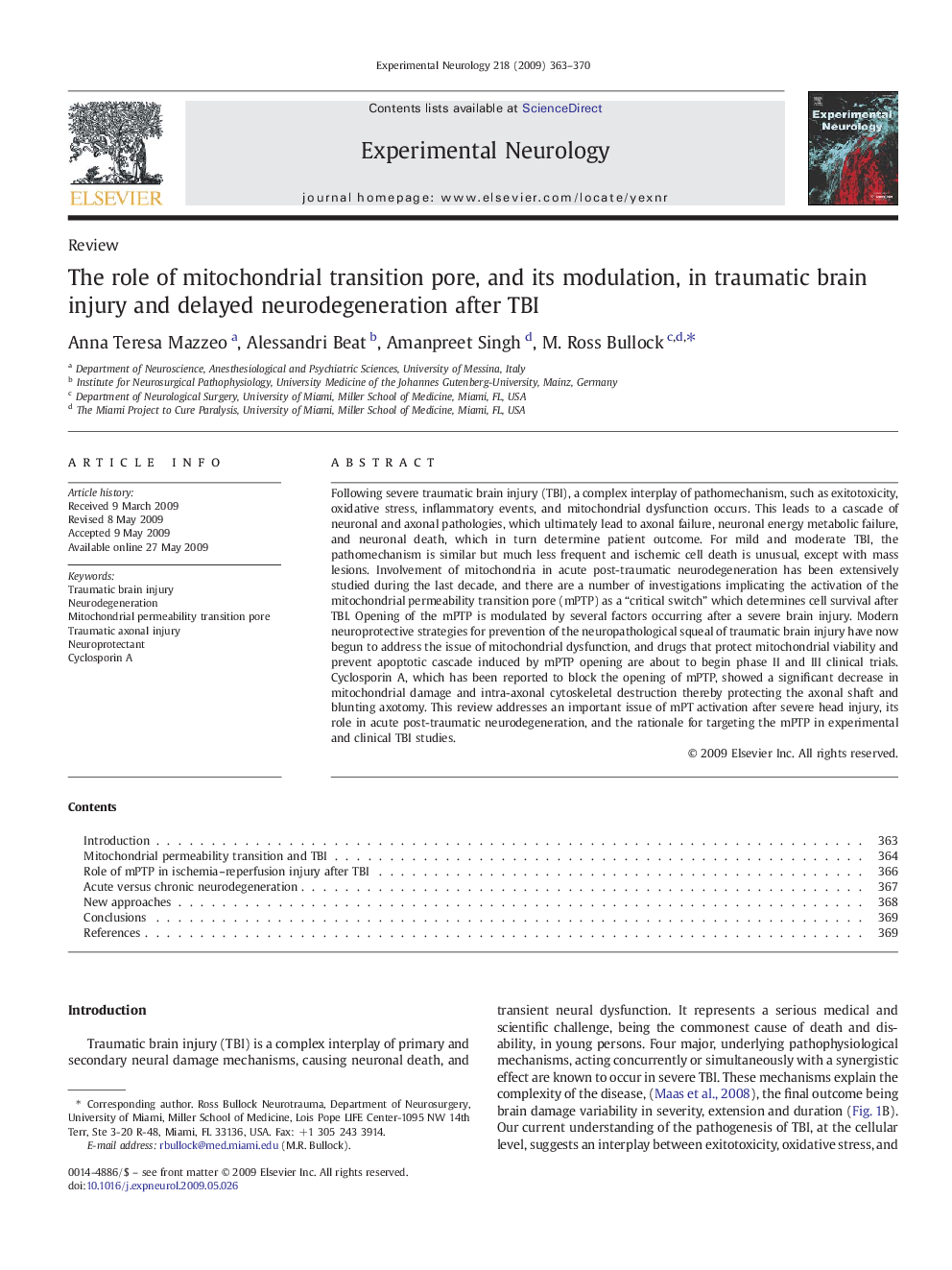| Article ID | Journal | Published Year | Pages | File Type |
|---|---|---|---|---|
| 3056235 | Experimental Neurology | 2009 | 8 Pages |
Following severe traumatic brain injury (TBI), a complex interplay of pathomechanism, such as exitotoxicity, oxidative stress, inflammatory events, and mitochondrial dysfunction occurs. This leads to a cascade of neuronal and axonal pathologies, which ultimately lead to axonal failure, neuronal energy metabolic failure, and neuronal death, which in turn determine patient outcome. For mild and moderate TBI, the pathomechanism is similar but much less frequent and ischemic cell death is unusual, except with mass lesions. Involvement of mitochondria in acute post-traumatic neurodegeneration has been extensively studied during the last decade, and there are a number of investigations implicating the activation of the mitochondrial permeability transition pore (mPTP) as a “critical switch” which determines cell survival after TBI. Opening of the mPTP is modulated by several factors occurring after a severe brain injury. Modern neuroprotective strategies for prevention of the neuropathological squeal of traumatic brain injury have now begun to address the issue of mitochondrial dysfunction, and drugs that protect mitochondrial viability and prevent apoptotic cascade induced by mPTP opening are about to begin phase II and III clinical trials. Cyclosporin A, which has been reported to block the opening of mPTP, showed a significant decrease in mitochondrial damage and intra-axonal cytoskeletal destruction thereby protecting the axonal shaft and blunting axotomy. This review addresses an important issue of mPT activation after severe head injury, its role in acute post-traumatic neurodegeneration, and the rationale for targeting the mPTP in experimental and clinical TBI studies.
